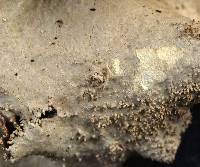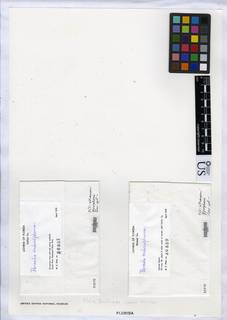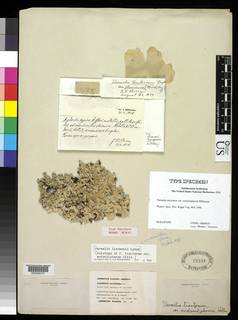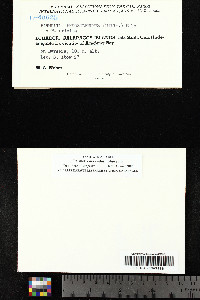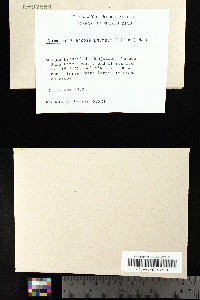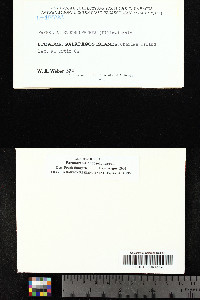
- Home
- Search
- Images
- Species Checklists
- US States: O-Z >
- US National Parks
- Central America
- South America
- US National Parks
- Southern Subpolar Region
|
|
|
|
Family: Parmeliaceae
[Parmelia endosulphurea (Hillmann) Hale, moreParmelia tinctoria var. endosulphurea Hillmann] |
MycoBank no. 343046 Type: Mexico. [State unknown]: Orcutt, C.R. 4728 (MO –holotype, fide Hale 1965). Description. Thallus corticolous, lignicolous, less frequently saxicolous; upper surface whitish gray to ivory, shiny to ± dull, epruinose, emaculate, not cracked; abundantly isidiate; isidia laminal, irregularly spread across the thallus surface, cylindrical, simple to sparsely branched, brown to blackened at their tip, eciliate; lobes broad, moderate-sized to large, 0.8–10(–14) mm wide, ± rotund, axils incised, margins eciliate; lower surface with a broad, pale to deep brown, erhizinate, ~ 4–6 mm wide margin, blackening and sparsely rhizinate towards the thallus center; rhizines short, stout, black, mostly simple, rarely sparsely branched, often growing in clusters; medulla mostly white, but the uppermost part distinctly yellow or pale salmon-yellow (check carefully, the pigmented layer can be very thin). Apothecia often absent but occasionally observed, 0.2–9 mm in diam., with a cupulate thalline margin, disc dark brown, deeply concave, imperforate, ascospores not observed. Pycnidia not observed. Chemistry. Cortex with atranorin [P+ yellow, K+ yellow, KC–, C–, UV–]; medulla with gyrophoric acid and ergochrome AA (= enthothein, secalonic acid A) [P–, K± dirty yellowish brown, KC+ yellow, C+ yellow, UV–]. Ecology and distribution. Asia, Africa, North, Central and South America (Hale 1965, 1974; Donha 2005; Benatti & Marcelli 2009), including continental Ecuador (Cevallos Solórzano 2012). First reported from the Galapagos by Weber (1986), subsequently by Elix & McCarthy (1998) and online (Bungartz et al. 2016). Along with P. cristiferum and P. tinctorum it is one of the most common and often abundant species; from the dry zone through the transition zone and humid zone, and all the way up to the high altitude dry zone; most frequent in the transition zone; typically growing on bark, very rarely on rock or other substrates; both in sunny, exposed and ± shaded and sheltered habitats; on a wide range of mostly native or endemic but also some introduced trees or shrubs. Notes. One of the most common species of Parmotrema in the Galapagos. Unless the medullary pigmentation is observed, the species is easily confused with the very similar and equally common P. tinctorum. The medullary pigmentation of P. endosulphureum can be conspicuously yellow or salmon-colored and is then easily observed, but the pigmentation can sometimes be very faint, and the presence of ergochrome AA is then best verified by its KC+/C+ yellow spot test reaction. |
|
|
|




